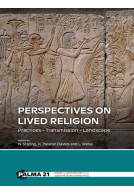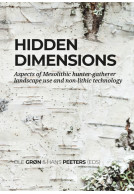Google Books previews are unavailable because you have chosen to turn off third party cookies for enhanced content. Visit our cookies page to review your cookie settings.
Transformation through Destruction (Paperback)
Imprint: Sidestone Press
Pages: 348
ISBN: 9789088901027
Published: 30th April 2013
Script Academic & Professional
Pages: 348
ISBN: 9789088901027
Published: 30th April 2013
Script Academic & Professional
You'll be £75.00 closer to your next £10.00 credit when you purchase Transformation through Destruction. What's this?
+£4.99 UK Delivery or free UK delivery if order is over £40
(click here for international delivery rates)
Need a currency converter? Check XE.com for live rates
(click here for international delivery rates)
Need a currency converter? Check XE.com for live rates
Some 2800 years ago, a man died in what is now the municipality of Oss, the Netherlands. His death must have been a significant event in the life of local communities, for he received an extraordinary funeral, which ended with the construction of an impressive barrow. Based on the meticulous excavation and a range of specialist and comprehensive studies of finds, a prehistoric burial ritual now can be brought to life in surprising detail. An Iron Age community used extraordinary objects that find their closest counterpart in the elite graves of the Hallstatt culture in Central Europe. This book will discuss how lavishly decorated items were dismantled and taken apart to be connected with the body of the deceased, all to be destroyed by fire. In what appears to be a meaningful pars pro toto ritual, the remains of his body, the pyre, and the objects were searched through and moved about, with various elements being manipulated, intentionally broken, and interred or removed. In essence, a person and a place were transformed through destruction. The book shows how the mourners carefully, almost lovingly covered the funeral remains with a barrow. Attention is also given to another remarkable monument, long mound 6, located immediately adjacent to mound 7. Excavations show how mound 7 was part of an age-old ritual heath landscape that was entirely restructured during the Early Iron Age, when it became the setting for the building of no less than three huge Hallstatt C barrows. Thousands of years later, during the Late Middle Ages, this landscape underwent a complete transformation of meaning when the prehistoric barrows became the scenery for a macabre display of the cadavers of executed criminals.This publication is part of the Ancestral Mounds Research Project of the University of Leiden.
Other titles in Sidestone Press...















